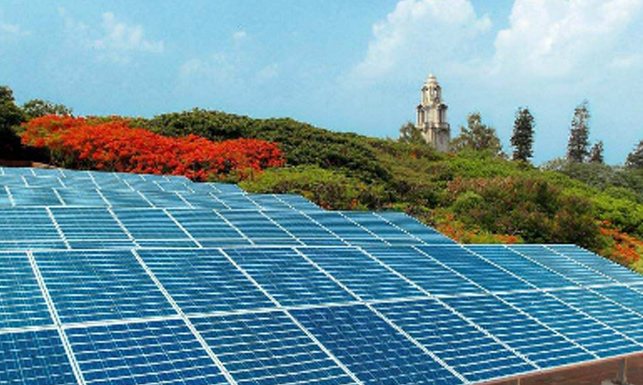

A 20 kiloWatt (peak) solar photovoltaic system was established at Indian Institute of Science in April 2013. The system has produced around 80 kWh/ day for the past four years. The annual energy generated was around 29 MWh (MegaWatt hours). The monthly energy generated was above 3 MWh in March and around 1.6 MWh in July. The analysis of the performance of this system has provided new information regarding the performance of such systems in India. The temperature of the solar module plays an important role in the energy output of the system. The annual average module temperature was around 45°C. In summer, module e ciency decreased by 0.08% per degree rise in module temperature. In the monsoon season, the e ciency reduced by 0.04% per degree rise in module temperature. In post monsoon period, it reduced by 0.06% per degree rise in module temperature. In winter the module did not exhibit much drop in the e ciency. This is because of intermittent natural cooling that took place at the surface of the modules due to lower ambient temperatures.
A mathematical model was developed to predict the yield from a solar photovoltaic plant based on the weather forecast at the location. This model can be deployed in the management of distributed energy generation systems consisting of SPV systems. The deviations of this model fromthemeasuredvaluesarearound15% for most of the days. The methodology adopted to develop the model can be used in any location. This model is simple to adopt as it uses performance data from a SPV system installed at a speci¿c location and weather forecast data available in the public domain. Hence, it would be a powerful tool for private solar power producers availing net-metering facility.
References : 1. M. Shravanth Vasisht and Sheela K. Ramasesha. ‘Forecast of solar power a key to power management and environmental protection’. Clean Technologies and Environmental Policy, Volume 19, Issue 1, January 2017. DOI: 10.1016/j.solener.2016.02.013. 2. M.ShravanthVasisht,J.Srinivasan, Sheela K. Ramasesha. ‘Performance of Solar Photovoltaic Installations: E ect of Seasonal Variations’. Solar Energy, Volume 131, pp. 39-46, June 2016. DOI: 10.1007/s10098-016-1199-7.
